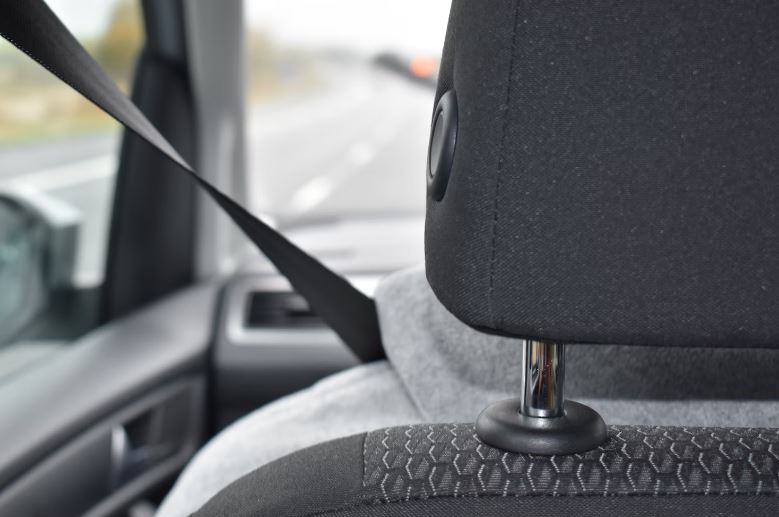Introduction
Driving a car is a complex task that involves a blend of cognitive functions, emotional responses, and social influences. Understanding the psychology behind driving can provide insights into why drivers behave the way they do, helping to enhance road safety and improve driving experiences. Let’s dive into the fascinating world of the driver’s mindset.
The Driver’s Mindset
What Influences Driving Behavior?
Driving behavior is influenced by a variety of factors, including personal experiences, environmental conditions, and psychological states. Drivers bring their own set of beliefs, attitudes, and emotions to the road, all of which can significantly impact their driving style.
The Role of Emotions in Driving
Emotions play a crucial role in driving. Anger can lead to aggressive driving, while stress can cause distractions. On the other hand, positive emotions like happiness can lead to more relaxed and cautious driving. Understanding how emotions influence driving behavior is essential for developing strategies to manage them effectively.
Cognitive Processes in Driving
Attention and Perception
Driving requires constant attention and the ability to perceive and react to a myriad of stimuli. Distractions, whether internal (thoughts, emotions) or external (phones, passengers), can severely impair these cognitive functions, increasing the risk of accidents.
Decision-Making and Reaction Time
Quick decision-making and reaction time are vital in driving. Factors like fatigue, alcohol, and even age can affect these abilities, making it crucial for drivers to be aware of their limits and the factors that can impair their performance.
visit: https://cash-4-cars.com.au/
The Impact of Personality on Driving
Risk-Taking Behavior
Some drivers have a higher propensity for risk-taking. Personality traits such as impulsivity and sensation-seeking can lead to behaviors like speeding or disregarding traffic signals, which increase the likelihood of accidents.
Aggressive vs. Defensive Driving Styles
Personality also influences whether a driver tends to be aggressive or defensive. Aggressive drivers are more likely to engage in risky behaviors, while defensive drivers are more cautious and focused on safety.
Emotional States and Driving Performance
How Stress and Anger Affect Driving
Stress and anger can lead to poor decision-making, slower reaction times, and an overall decrease in driving performance. Techniques such as deep breathing and taking breaks can help manage these emotions.
The Influence of Happiness and Calmness
Positive emotional states like happiness and calmness can enhance driving performance. Drivers in a good mood tend to be more patient, focused, and considerate on the road.
The Role of Experience and Training
Novice vs. Experienced Drivers
Experience plays a significant role in driving behavior. Novice drivers may lack the skills and confidence of more experienced drivers, making them more prone to mistakes. Experienced drivers, however, may become complacent and engage in risky behaviors due to overconfidence.
The Impact of Driver Education
Driver education and training programs are crucial for developing safe driving habits. These programs teach essential skills and provide knowledge that can help drivers navigate various driving conditions and situations safely.
Social Influences on Driving Behavior
Peer Pressure and Social Norms
Social influences, such as peer pressure and societal norms, can impact driving behavior. Young drivers, in particular, may engage in risky behaviors to impress friends or conform to group expectations.
The Influence of Passengers
The presence of passengers can also affect driving behavior. While passengers can provide assistance and enhance alertness, they can also be a source of distraction, particularly for young or inexperienced drivers.
The Effect of Environment on Driving
Urban vs. Rural Driving
Driving in urban areas often involves navigating heavy traffic, numerous pedestrians, and complex road layouts, which can be stressful and require heightened attention. In contrast, rural driving typically involves higher speeds and less traffic, but presents its own challenges, such as wildlife and fewer safety barriers.
Weather Conditions and Road Types
Weather conditions and different road types can significantly influence driving behavior. Rain, snow, and fog can reduce visibility and road traction, requiring drivers to adjust their speed and driving style to maintain safety.
Technology and the Modern Driver
Impact of In-Car Technology on Attention
Modern cars are equipped with various in-car technologies, from GPS navigation to entertainment systems. While these technologies can enhance the driving experience, they can also serve as distractions if not used properly.
The Role of Autonomous Driving Features
Autonomous driving features, such as adaptive cruise control and lane-keeping assistance, are becoming increasingly common. These technologies can reduce the cognitive load on drivers, but they also require drivers to stay vigilant and be ready to take control if necessary.
Cultural Differences in Driving Behavior
Driving Norms Around the World
Driving behavior varies significantly across different cultures. What is considered normal and acceptable in one country may be seen as reckless or overly cautious in another. Understanding these cultural differences can improve international driving experiences and safety.
Cultural Attitudes Towards Traffic Laws
Different cultures have varying attitudes towards traffic laws and enforcement. In some countries, strict adherence to traffic rules is expected, while in others, there may be a more relaxed approach. These attitudes can influence overall driving behavior and road safety.
Psychological Strategies for Safer Driving
Techniques for Managing Stress
Managing stress is crucial for safe driving. Techniques such as deep breathing, listening to calming music, and taking regular breaks can help drivers stay calm and focused on the road.
The Importance of Mindfulness
Practicing mindfulness can improve driving behavior by helping drivers stay present and aware of their surroundings. This can lead to better decision-making and a more relaxed driving experience.
The Future of Driving Psychology
The Impact of Autonomous Vehicles
Autonomous vehicles are set to revolutionize driving behavior. With AI handling most of the driving tasks, the driver’s role will shift from active control to monitoring and decision-making in critical situations. This change will have profound implications for driving psychology.
Emerging Trends in Driver Behavior Research
Research into driver behavior is continually evolving. Emerging trends include the study of how drivers interact with autonomous systems, the impact of connected car technologies, and the development of personalized feedback systems to improve driving habits.
Common Misconceptions About Driving Psychology
Myths About Multitasking
One common misconception is that drivers can effectively multitask. Research shows that multitasking significantly impairs driving performance, as attention and cognitive resources are divided.
Misunderstandings About Aggressive Driving
Aggressive driving is often misunderstood. While some believe it is a natural response to frustration, it is typically a learned behavior that can be managed through stress reduction techniques and behavioral interventions.
Case Studies and Real-Life Examples
Analysis of Notable Traffic Incidents
Examining real-life traffic incidents can provide valuable insights into driver behavior. These case studies highlight common mistakes and offer lessons on how similar situations can be avoided.
Lessons Learned from Driving Behavior Research
Research into driving behavior has led to important discoveries about what influences safe and unsafe driving. These lessons help shape driver education programs and inform public policy aimed at improving road safety.
Conclusion
The psychology of driving encompasses a wide range of factors, from cognitive processes and emotional states to social influences and environmental conditions. Understanding these factors is essential for improving road safety and enhancing the driving experience. By exploring the driver’s mindset, we can develop better strategies for managing stress, improving decision-making, and ultimately making our roads safer for everyone.
visit: https://cash-4-cars.com.au/car-removals-adelaide/
FAQs
What are the main psychological factors affecting driving behavior?
The main psychological factors include cognitive processes (attention, perception, decision-making), emotional states (stress, anger, happiness), personality traits (risk-taking, aggressiveness), and social influences (peer pressure, passenger presence).
How does stress influence driving performance?
Stress can impair driving performance by reducing attention, slowing reaction times, and increasing the likelihood of aggressive behavior. Managing stress through relaxation techniques and regular breaks is crucial for safe driving.
Can driver training programs improve driving psychology?
Yes, driver training programs can significantly improve driving psychology by teaching essential skills, enhancing situational awareness, and promoting safe driving habits.
What role does technology play in modern driving psychology?
Technology plays a dual role in modern driving psychology. While in-car technologies and autonomous features can enhance safety and reduce cognitive load, they can also serve as distractions if not managed properly.
How will autonomous vehicles impact driver behavior?
Autonomous vehicles will shift the driver’s role from active control to monitoring and decision-making in critical situations, fundamentally changing the dynamics of driving behavior and requiring new psychological adaptations.





